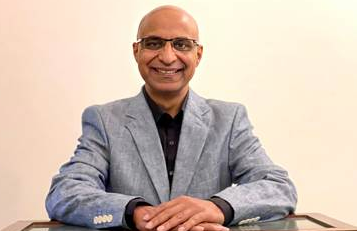"The medical apps market is estimated to reach Rs 337.89 B by 2026"
February 06, 2022 | Sunday | Views
The possibilities and applications of telehealth are endless. To delve into how technology, real time engagement and voice and video services can power the healthcare system, BioSpectrum talks to Ranga Jagannath, Director-Growth, Agora.
How can real-time voice, video chat, and streaming increase accessibility to the healthcare sector? What are the challenges associated with it?
Perhaps the most significant benefit of a virtual doctor's appointment is that it doesn't require a brick-and-mortar doctor's office. With voice, video chat, and streaming, doctors and patients are virtually brought together in real-time. Capabilities like crystal clear audio, smooth, real-time video, and integrated functionalities allow patients to share their medical condition and records, doctors to review medical imaging scans, or mental health professionals to conduct remote sessions with patients.
Some of the challenges associated with this could be connectivity throughout the country. However, with India's increasing internet and smartphone penetration, voice and video chat can make inroads into remote corners that do not have access to quality healthcare. Real-time engagement reduces or eliminates the need for travel. Real-time engagement, therefore, allows patients and their caretakers to save time, energy, and money by addressing the issues with the right doctor from the comfort of the patient's home. Low latency, adaptive resolution, and seamless channel switching provide a reliable stream even in the most challenging network conditions.
Video calls and streaming services signal a shift that will allow a growing number of Indians to receive the medical attention they need, no matter their location.
How is Agora enabling the treatment of patients and teaching medicine with real-time digital experience?
Agora's real-time engagement platform provides global reach, reliable streaming, and real-time interactions for remote medical consultation, video first aid, interactive medical education, and large-scale event streaming. Real-time engagement is applicable for physical health care issues and for addressing mental health issues via voice and video-based teleconsultations.
Training students and doctors using live video overlayed with Augmented Reality (AR) add an entirely new dimension in the medical training and teaching domain. With Agora's Real-Time Engagement Platform, medical professionals can share their expertise remotely through webinars, live streaming surgeries or other procedures, offer one-on-one voice and video consultation, or in small group discussions.
Yet another use of real-time engagement in an ancillary area is health-related classes. For example, MixPose, a streaming platform for yoga instructors and fitness professionals, used Agora’s API to build live streaming into its platform for yoga instructors leading real-time classes, allowing instructors and viewers to capture the experience of a guided session. Agora’s video SDK pairs with MixPose’s AI functions to evaluate the yoga poses of participants, helping to offer guidance and track progress.
Explain the rise of telehealth apps and how AI and ML enable their growth?
Thanks to the rise of telehealth apps, booking medical appointments have become as easy as ordering food or booking a cab online. With the increasing usage of healthcare technology, telehealth mobile apps have become a win-win solution for doctors and patients. According to the "Healthcare Apps Market in India 2021 Report", the medical apps market is estimated to reach Rs 337.89 bilion by 2026, expanding at a CAGR of ~39.37% during the 2021-2026 period.
Technology like AI and ML have become critical in developing robust telehealth apps. From chatbots, voice recognition, and automated health alerts, AI-supported features can help physicians quickly check the patient's history, view reports, generate digital prescriptions, and always provide instant help. Combining this with ML algorithms allows medical professionals to study a patient's case and improve diagnostic abilities thoroughly.
Citing the earlier example, Mixpose, an AI-based wellness telehealth app, uses an AI pose estimation to track yoga poses and assist instructors with providing feedback to users.
How much revenue/value would be added with the implementation of newer technologies in the digital healthcare market in India?
With time, more medical institutions are ready to strengthen their digital infrastructure with newer technologies like AI, ML, IoT, robotics, AR, VR, and others for enhanced patient care, data analysis, and healthcare practices. Personalized care during the pandemic and improved medical training or surgical procedures are outcomes of such technologies. The digital healthcare market stood at Rs 116.6 billion in 2018. According to a KPMG report, this market is expected to reach Rs 485.4 billion by 2024, at a CAGR of ~27.4 percent.









